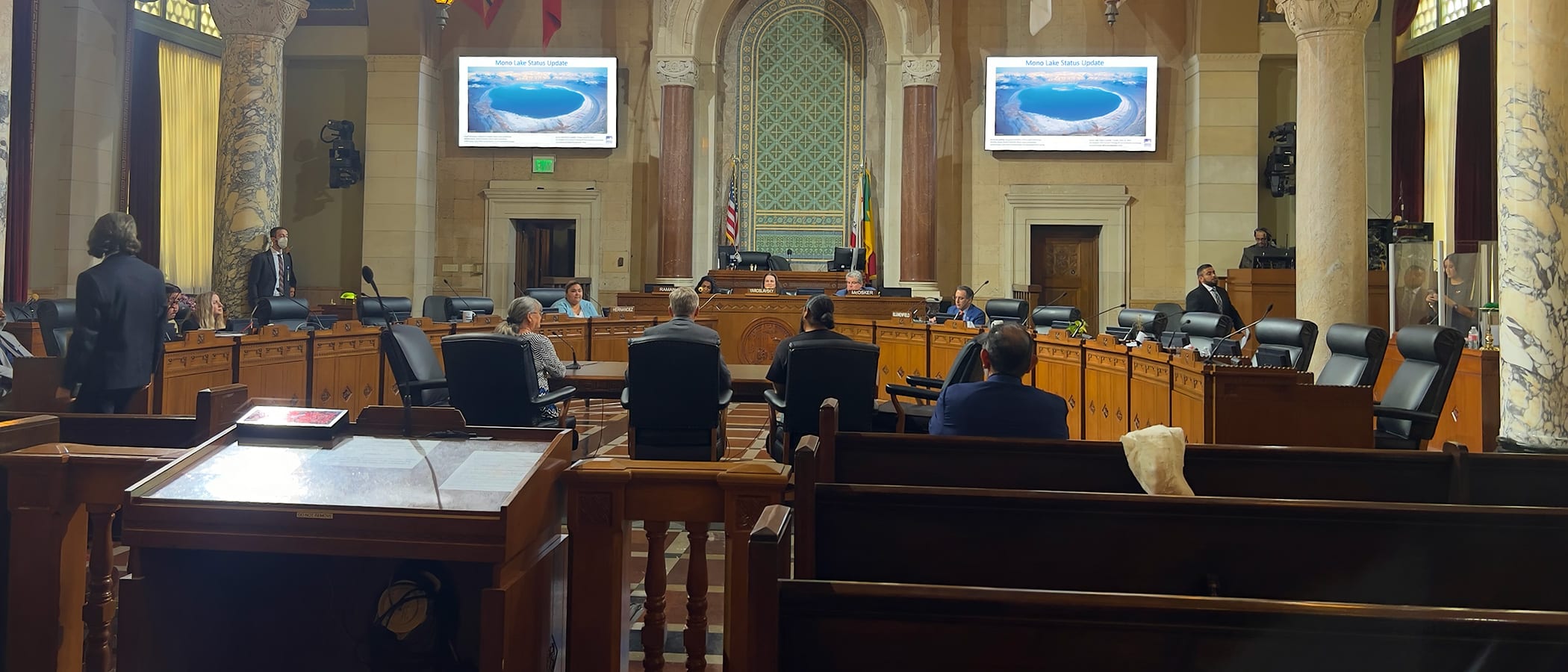
Technical discussions will explore diversion scenarios
Mono Lake has been the topic of important discussions in Los Angeles in recent months, focusing on the challenge of ensuring the lake rises to the 6392-foot Public Trust lake level. This level was mandated by the California State Water Resources Control Board to secure the lake’s ecological health, protect millions of nesting and migratory birds, end toxic dust storms, protect cultural resources, and ensure future generations can enjoy the lake.
Mayor’s office meeting launches technical discussions
In April, Los Angeles Deputy Mayor for Energy & Sustainability Nancy Sutley convened a meeting with Mono Lake Committee and Los Angeles Department of Water & Power (DWP) leadership. The productive discussion focused on Mono Lake, the Public Trust lake level required in the City’s water rights, and the need to better understand what paths lead there.
The meeting produced a commitment to assemble a technical group to explore, compare, and present a variety of stream diversion scenarios and evaluate their effectiveness in raising Mono Lake to the 6392-foot level. Hydrology modeling of stream diversions and lake level response is essential to identifying options, and technical experts at the Committee and DWP have collaborated successfully in years past.
The technical discussions will include the Committee and DWP, the California Department of Fish & Wildlife, California Trout, and the Mono Lake Kootzaduka’a Tribe, along with representatives from the State Water Board. A 30-person kickoff meeting was held in August and a smaller workgroup of hydrology and model experts is now meeting monthly. The workgroup is expected to develop a report in April 2024.
The technical discussions are not a forum for negotiations, and running the models does not mean any specific stream diversion scenario is endorsed by participants—a point DWP’s attorneys have emphasized. The Committee agrees, as the goal is to jointly develop information useful for comparing scenarios. That means the workgroup is expected to look at everything from continuing the same problematic stream diversions of the past 29 years to fully pausing DWP diversions until the lake reaches the Public Trust lake level. For the Committee, one interesting opportunity in this work is to explore how concepts for dynamic diversion rules that adjust over time can preserve gains in lake level from wet years.
City Council updates on Mono Lake
The Los Angeles City Council showed its interest in Mono Lake’s situation this summer, requesting an update on the current status before the Energy & Environment Committee, which is chaired by Councilmember Katy Yaroslavsky. On June 23, I was joined in the City Council chambers by Committee Board member Martha Davis and mark! Lopez, Special Projects Coordinator from East Yard Communities for Environmental Justice. We spoke about the importance of Mono Lake and the historic commitment to set aside disputes and implement the State Water Board’s 1994 Mono Lake decision, including the critical lake management level. mark! discussed “the imperative to stop relying on imported water—and Mono Lake is imported water,” for the sake of Los Angeles, because “the more that we become free of that the stronger we get in our communities when it comes to resilience.”
As fall colors arrive in the Mono Basin we are encouraged by the progress made over the summer. The continued vigilance of the Committee and Mono Lake supporters is making a difference. Although the road is long and winding, implementation of the protections the lake—and all Californians—have been promised can be achieved.
This post was also published as an article in the Fall 2023 Mono Lake Newsletter. Top photo by Santiago Escruceria.
